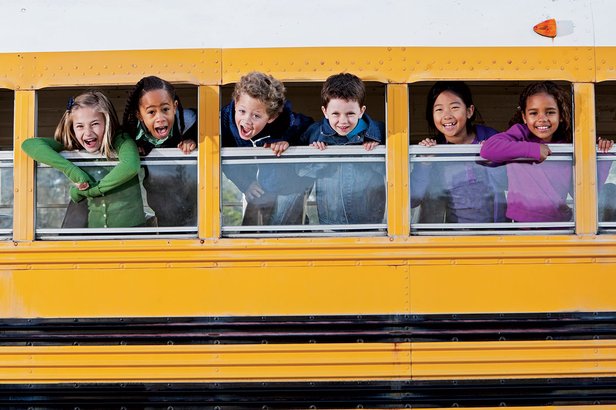
What is there to really think about if your child is headed to the neighborhood school? The choice is already made. Well, it is and it isn’t. Public school enrollment in the greater Seattle area and in many parts of the nation is open this month, and soon parents will have choices to make. If you are a first-time parent, chances are that the last time you walked into an elementary school was when you attended elementary school. That was a long time ago. While life as we know it has changed dramatically in the years since you went to elementary school, schools have not changed much. This is not a proud state of affairs.
Education around the world is being inspected, reformed or transformed. Schools are in transition, grappling with demands of the 21st century, standards and bulging classrooms. Parents have choices within the public school system. Beyond that, you have decisions to make about how you will extend a child’s school education to meet the demands of the new century.
As you make your way back into elementary schools, your child in your heart, your mind still racing back to when you attended an elementary school, consider the following factors that outline what matters most for finding and creating a meaningful, inspiring, holistic and cutting-edge elementary school education. These factors bridge the gap between what was, what is and what is to come.

Relationships
Relationships are the backbone of learning. They give your child a sense of belonging, let her know that she is safe and that it is okay for her to take chances, step outside her comfort zone and take on learning challenges. Strong, trusting relationships are intentionally cultivated. What to look for:
- Sense of community: Teacher focuses on cultivating a sense of classroom community.
- Support for making friends: Students are intentionally paired so they can make new friends and learn how to work with partners they would not naturally choose.
- Emotional coaching: Scheduled time allows for group-wide discussion on social issues, intentionally chosen social-emotional curriculum provides specific practices and language emotional expression.
- Greater sense of community: A focus on individual self, then neighboood to city to country to global, all with a keen eye on the beyond-human world that we are all intricately tied to.
Competence
Middle childhood, a once deemphasized period of growing years, is a critical period of time. Between the ages of 6 and 11 years a child internalizes whether or not she is a good learner. Children between the ages of 6-11 years seek competence. What to look for:
- Routines: Predictable classroom schedule, steady learning routines.
- Participation: Multiple modalities for talkative and quieter students to participate and demonstrate their understanding.
- Individual and collaborative work: Opportunities for quieter individual work and focused collaborative learning.
- Differentiation: Differentiated support for all learners to learn reading, writing and math at a level that is right for each individual learner.
- Meta-cognitive skills: Emphasis on and integration of thinking skills such as critical thinking, problem solving, ethical thinking.
- Creativity: Open-ended activities that foster creativity and flexibility.
- Support for challenges: Teacher practices identifying areas of challenge early on and has the resources to respond to students who experience learning challenges at any and all levels.
- Motivation: A tone of teaching and learning that motivates students and inspires them to remain curious and excited to learn.

Passions
Elementary-age students are curious, ready to learn and open to all kinds of experiences. Unfortunately, much of this open-eyed excitement and willingness to learn is dried out of them by adolescence. This needs to change. What to look for:
- Active involvement: Learning topics leave room for student ideas.
- Open-ended learning: Some curricular topics are inspired by student questions or interests.
- Study time: Time for students to work on projects during the school day.
- Project support: Support for students to persist on a project through ups and downs.
- New and diferent activities: Exposure to a variety of extra-curricular activities.
Partnerships
Educating a child requires teamwork. Parents and teachers are all on one team. A child thrives when parents and teachers collaborate and when teachers collaborate with each other. A successful partnership is filled with healthy respect for what each one does and realistic expectations grounded in the fact that not everyone can do everything. What to look for:
- Communication: Open lines of communication initiated by teachers.
- Updates: Weekly updates on classroom wide learning activities especially in the early years.
- Teacher-to-teacher collaboration: School prioritizes time for teachers to collaborate with each other.
- Classroom volunteering: An invitation for parents to volunteer at the school and if possible in the child’s classroom.
- Working with all resources: An openness to work with outside-of-school specialists if needed.
- Integration across subjects: Learning activities integrated across classroom subjects and specialist subjects.

Values
Never underestimate the power of family values and family life on your child’s education. Education does not happen just at school. It happens everywhere and especially in a family. You can create a powerful education for your child grounded in your family’s values. What to consider:
- Alignment: An alignment of family values on education and a school’s implementation of district goals. Look for this alignment in how a school thinks about community, partnership and the changing demands of the 21st century.
- Home-school balance: Inspect what you naturally do for your child’s education at home and how this balances with what the school will do.
- Values not goals: Recognize that you may have many educational goals for your child but that all those goals are your goals. You can bathe your child in your family values but its painful to impose your educational goals on your child.
Finding and creating the right education is a process, a process of trial and error, of educating yourself as your child grows and as life evolves. Embark on it one step at a time with excitement and curiosity, to grow and learn along with your child.











